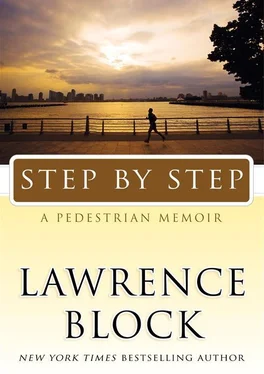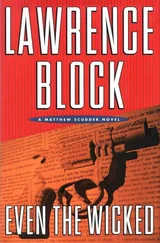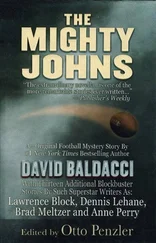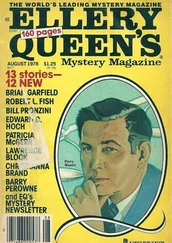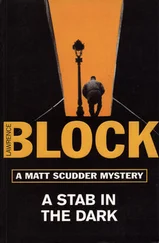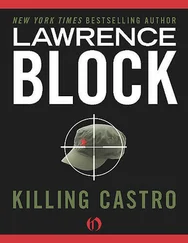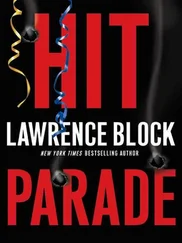Lawrence Block - Step by Step
Здесь есть возможность читать онлайн «Lawrence Block - Step by Step» весь текст электронной книги совершенно бесплатно (целиком полную версию без сокращений). В некоторых случаях можно слушать аудио, скачать через торрент в формате fb2 и присутствует краткое содержание. Год выпуска: 2009, ISBN: 2009, Издательство: William Morrow, Жанр: Биографии и Мемуары, Юмористические книги, на английском языке. Описание произведения, (предисловие) а так же отзывы посетителей доступны на портале библиотеки ЛибКат.
- Название:Step by Step
- Автор:
- Издательство:William Morrow
- Жанр:
- Год:2009
- ISBN:978-0-06-172181-6
- Рейтинг книги:3 / 5. Голосов: 1
-
Избранное:Добавить в избранное
- Отзывы:
-
Ваша оценка:
- 60
- 1
- 2
- 3
- 4
- 5
Step by Step: краткое содержание, описание и аннотация
Предлагаем к чтению аннотацию, описание, краткое содержание или предисловие (зависит от того, что написал сам автор книги «Step by Step»). Если вы не нашли необходимую информацию о книге — напишите в комментариях, мы постараемся отыскать её.
bestselling author comes a touching, insightful, and humorous memoir of an unlikely racewalker and world traveler.
Step by Step — читать онлайн бесплатно полную книгу (весь текст) целиком
Ниже представлен текст книги, разбитый по страницам. Система сохранения места последней прочитанной страницы, позволяет с удобством читать онлайн бесплатно книгу «Step by Step», без необходимости каждый раз заново искать на чём Вы остановились. Поставьте закладку, и сможете в любой момент перейти на страницу, на которой закончили чтение.
Интервал:
Закладка:
Three weeks of real training, with the mileage dropping as I went along. I’d done ninety-two miles, so I could drop down to seventy the following week, say, and then to sixty, and finally to fifty. No speed work, no pushing, nothing but nice easy walking.
The first week, the seventy-mile week, I wound up taking three days off, and when the week was done I’d been out there eight hours, for thirty-two miles.
The second week was five hours. Twenty miles, not the sixty I’d scheduled for myself.
I went out for an hour the first day of the third week. And that was it.
How did this happen?
I can’t make sense of it. It’s not as though I made a conscious decision to sabotage myself and cut my training short. Early on, whenever I found myself skipping a day, I’d tell myself I’d make it up the next day. Before long, however, I didn’t even bother having the intention. My training had ground to a halt, and I dealt with it by not dealing with it. As far as I can recall, I didn’t even think about it very much. The calendar I used to log my training miles was on a hook in the bathroom, and I saw it every time I shaved or brushed my teeth, but it wasn’t that hard to avoid looking at it.
And, come November, I could turn the page.
The last week of October I’d planned to walk fifty miles, but managed all of four. I’d written a film with Wong Kar-Wai, the brilliant Hong Kong — based director, and while My Blueberry Nights had already opened the Cannes Film Festival, I had to furnish some additional voice-overs prior to its U.S. release. My work had to be completed before the Writers Guild strike commenced on the first of November. Still, that left me plenty of time for an hour or two a day at the river’s edge, and that sort of walking is good preparation for writing, giving the mind a chance to wander constructively. One day I sauntered down to the Weinstein Company offices in Tribeca, then walked back after my meeting. I suppose it was around a mile and a half each way, so I covered three miles that day, but I wasn’t racewalking and it didn’t amount to anything to mark on my calendar.
I spent the first week of November at my daughter Jill’s house on Fire Island, using the place as my own private writer’s colony. I’d stopped working on the book right before the part about the walk across Spain, and that’s what I wrote on Fire Island. I put in long hours, tapping away pretty much from dawn to dusk, but I could have managed a long walk every day, and couldn’t have asked for a nicer venue for it. I’d done a long training walk there a month earlier, in the course of a weekend visit, and it was even nicer now, with even fewer people around. I brought my walking gear along, unpacked it on arrival, and packed it up again, unused, for the trip home.
Well, nothing you do in the last two weeks helps anyway, I reminded myself. It was too late for training to do me any good, and there was always the chance it could hurt me.
It’s true, certainly, that heavy mileage right before a race is counterproductive, and that one is best advised to err on the side of caution. Still, it might have been a good idea for me to get out there for an hour a day during those last two weeks, given that I’d done so little in the three weeks that preceded them. Just getting out there and walking might keep my feet from going soft. They’d been soft at Wakefield, that’s why they’d blistered, and by putting in so little time in the month before the Ultracentric, I was courting the very same thing again.
I thought of this. But I didn’t act on it.
Having stopped training prematurely, I was able to devote myself wholeheartedly to another phase of prerace preparation.
Carbo loading.
There’s no real point in wolfing down carbohydrates before a race, not if you’re a slow runner, certainly not if you’re walking fifteen-minute miles. Still, most walkers and runners fit in a plate of pasta the night before racing, not because it’s likely to improve one’s performance but because it’s (a) traditional, (b) harmless, and (c) tasty. But even for those speedy marathoners for whom carbo loading might serve a purpose, it’s something you do for a day or two.
From the middle of October right up to race time, I made it a way of life. It wasn’t purposeful, but it must have looked that way. I overate consistently, and when I thought about it all I did was slide into depression and self-loathing, and that only served to make me hungry.
I don’t know how much weight I may have put on in that final month, because I certainly wasn’t fool enough to set foot on a scale, but my clothes were tighter and I felt sluggish. That’s never welcome, but it’s an especially unhappy state of affairs at a race.
Excess weight impedes performance. Whether you’re a slow walker or a fast runner, the more you weigh the slower you go, and the more energy you expend moving your body through the miles. The more you weigh, the greater the impact on your feet — and everything else — of every step you take. The more you weigh, the more the miles and the hours weigh upon you.
There’s a widespread assumption among those who don’t run or walk great distances that doing so is a guarantee of slimness, and it’s not hard to guess where it comes from. The most successful walkers and runners are a lean lot indeed, and it’s natural to infer that running made them so, and to take it a step further and assume that anyone who trains and races as they do is sure to wind up looking like them.
Even when one knows better, it’s easy to find oneself thinking along these lines. At Houston in 2006, I got a look at the list of forty-eight-hour entrants, and noted that one fellow had listed the T-shirt he wanted as 3XL. “Sheesh,” I told a friend, “he’ll probably be a Medium by the time he finishes.”
It doesn’t work that way. A volunteer at the food tent of that particular race, himself an ultrarunner, allowed as how he’d never finished an ultra without gaining a pound or two. It’s just not that hard to ingest more calories than you burn, no matter how long you keep on circling the track.
In my own case, I’ve always found it easier to keep my weight where I want it when I’m putting in my time on the road or the treadmill. And I’ve also found that doing so is no guarantee I won’t regain whatever I’ve lost. If exercise is a remarkable thing, appetite is every bit as remarkable, and more than equal to the challenge exercise flings at it.
The edge exercise sometimes provides lies less in the calories it consumes than in the motivation it provides. I got on the treadmill in August of 2004 out of profound dissatisfaction with the shape I was in. I started walking to lose weight, and — because I was also paying attention to what I ate — I was successful.
And after I’d been doing it for a while, after I’d gone from working out to training to racing, I found I was no longer walking to lose weight so much as I was losing weight in order to walk faster.
When I began training for the Ultracentric, I was not merely intent upon putting miles on my legs and toughening my feet. I was every bit as interested in bringing myself to the starting line in the best possible condition for the ordeal that awaited me, and that meant dropping a few pounds. So when I got into the swing of training that last week of August, I made sure my diet was appropriate. It wasn’t all that severe a regimen, and it worked just fine, providing sufficient fuel for high-mileage training while whittling away the pounds.
Until the month before the race, when all at once everything went to hell.
My flight was booked, my hotel reserved and paid in advance.
I wanted to stay home.
Because I knew there was no way I could give a good account of myself. I’d trained with great intensity for two full months, and then I’d somehow done everything I could short of chopping off a couple of toes to undo that training and render myself unfit for the Ultracentric.
Читать дальшеИнтервал:
Закладка:
Похожие книги на «Step by Step»
Представляем Вашему вниманию похожие книги на «Step by Step» списком для выбора. Мы отобрали схожую по названию и смыслу литературу в надежде предоставить читателям больше вариантов отыскать новые, интересные, ещё непрочитанные произведения.
Обсуждение, отзывы о книге «Step by Step» и просто собственные мнения читателей. Оставьте ваши комментарии, напишите, что Вы думаете о произведении, его смысле или главных героях. Укажите что конкретно понравилось, а что нет, и почему Вы так считаете.
